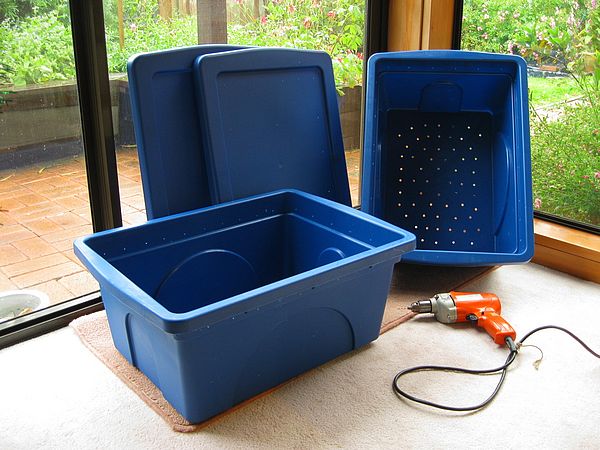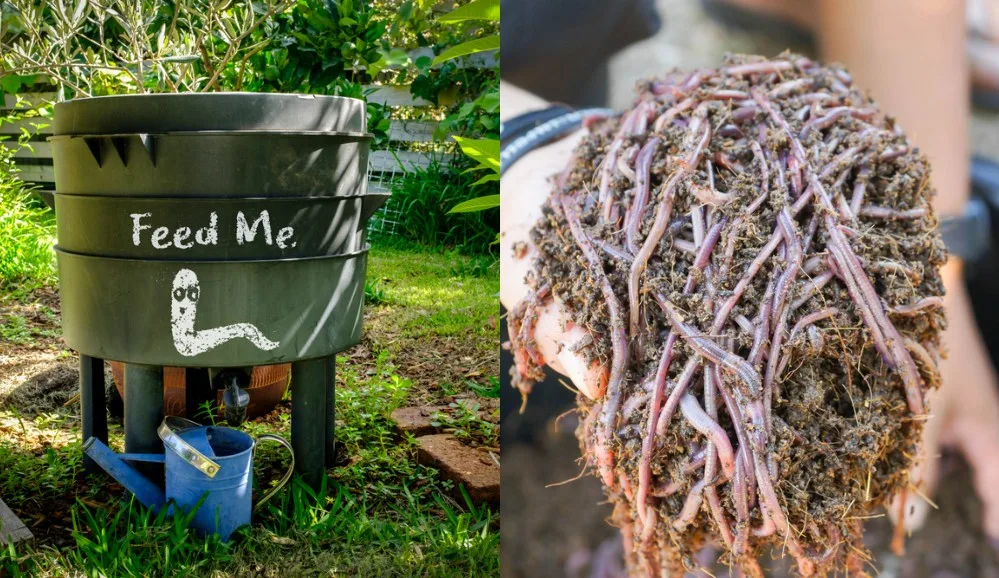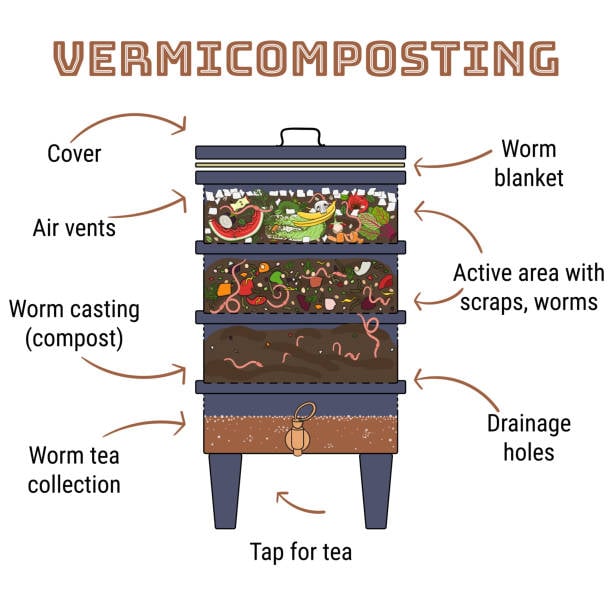The Ultimate Guide To Choosing The Best Worm Farm For Your Needs
The Ultimate Guide to Choosing the Best Worm Farm for Your Needs
Worm farming is a great way to reduce your food waste, create nutrient-rich compost, and attract beneficial insects to your garden. But with so many different worm farms on the market, it can be tough to know which one is right for you.
In this guide, we will discuss the different types of worm farms available, the factors you need to consider when choosing a worm farm, and how to set up and maintain your worm farm.
Types of Worm Farms
There are two main types of worm farms:
- Vermicomposting bins: These are the most common type of worm farm. They consist of a series of stacked trays or bins that are filled with bedding material and worms. Food scraps are added to the top tray, and the worms slowly digest the food and break it down into nutrient-rich compost.
- Continuous flow worm bins: These worm farms are designed to continuously produce compost. They consist of a single bin that is divided into two chambers. The worms live in the bottom chamber, and food scraps are added to the top chamber. As the food scraps are digested, they fall through the chambers and into a collection tray at the bottom.
Factors to Consider When Choosing a Worm Farm
There are a few factors you need to consider when choosing a worm farm:
- Size: How much food waste do you generate? If you have a small household, you can get away with a small worm farm. But if you have a large household or you are using your worm farm to compost food scraps from a restaurant or cafe, you will need a larger worm farm.
- Space: How much space do you have? Worm farms can be kept indoors or outdoors. If you are keeping your worm farm indoors, you will need to find a spot that is out of the way and that does not get too hot or too cold. If you are keeping your worm farm outdoors, you will need to find a spot that is shady and that does not get too wet.
- Budget: Worm farms range in price from a few dollars to several hundred dollars. It is important to set a budget before you start shopping so that you do not overspend.
- Ease of use: How easy is the worm farm to set up and maintain? Some worm farms are more complex than others. If you are a beginner, you may want to choose a worm farm that is easy to set up and maintain.
- Materials: Worm farms are made from a variety of materials, including plastic, wood, and metal. Some materials are more durable than others. If you are planning to keep your worm farm for a long time, you may want to choose a worm farm that is made from a durable material.
Setting Up Your Worm Farm
Once you have chosen a worm farm, you need to set it up. Here are the basic steps involved in setting up a worm farm:
- Choose a spot for your worm farm. It should be out of the way, but not too dark.
- Fill the worm farm with bedding material. Bedding material can be made from a variety of materials, such as shredded newspaper, cardboard, or leaves.
- Add your worms to the worm farm. You can usually buy worms from a local nursery or garden center.
- Start feeding your worms. Food scraps can be added to the worm farm on a daily basis.
- Water your worm farm regularly. The bedding material should be kept moist, but not soggy.
Maintaining Your Worm Farm
Once your worm farm is set up, it is important to maintain it properly. Here are a few tips for maintaining your worm farm:
- Feed your worms regularly. You should add food scraps to the worm farm on a daily basis.
- Water your worm farm regularly. The bedding material should be kept moist, but not soggy.
- Check your worm farm for pests and diseases. If you see any pests or diseases, take steps to control them immediately.
- Harvest your compost regularly. You can harvest your compost once it is finished breaking down.
Conclusion
Worm farming is a great way to reduce your food waste, create nutrient-rich compost, and attract beneficial insects to your garden. With so many different worm farms on the market, it is important to choose the right one for your needs. By following the tips in this guide, you can set up and maintain a successful worm farm.
Are you looking for the best worm farm to start your own composting journey? If so, you've come to the right place! Garden Wiki is a comprehensive resource for everything you need to know about worm farms, from choosing the right type of farm to caring for your worms.
On Garden Wiki, you'll find detailed reviews of the top worm farms on the market, as well as helpful articles on topics such as worm care, composting tips, and even how to market your worm farm. Whether you're a beginner or a seasoned worm farmer, Garden Wiki has something for everyone.
So what are you waiting for? Visit Garden Wiki today and learn everything you need to know about worm farms!
FAQ of best worm farm
- What is the best type of worm farm for me?
There are two main types of worm farms: the stacked worm farm and the continuous flow barrel. Stacked worm farms are the most common type and are relatively easy to set up and maintain. Continuous flow barrels are more efficient, but they require more space and are more expensive.
The best type of worm farm for you will depend on your individual needs and preferences. If you are a beginner, a stacked worm farm is a good option. If you have a lot of food scraps to compost, a continuous flow barrel may be a better choice.
- What type of worms do I need for a worm farm?
The most common type of worm used for worm farming is the red wiggler worm (Eisenia fetida). Red wigglers are easy to care for and are very efficient at composting food scraps. They can also reproduce quickly, which means that your worm farm will be able to handle a large amount of food scraps.
If you live in a cold climate, you may want to consider using a different type of worm, such as the European nightcrawler (Dendrobaena veneta). European nightcrawlers are more tolerant of cold weather than red wigglers.
- How much space does a worm farm need?
The amount of space a worm farm needs will depend on the size of the farm and the amount of food scraps you plan to compost. A small, stacked worm farm can fit on a countertop or in a closet. A larger, continuous flow barrel may need to be placed in a garage or basement.
- How do I feed my worm farm?
The best way to feed your worm farm is to add a small amount of food scraps every day or two. The food scraps should be a mix of fruits, vegetables, and coffee grounds. Avoid adding meat, dairy, or oily foods, as these can attract pests and spoil the compost.
It is also important to keep the bedding moist, but not soggy. You can do this by adding a small amount of water to the bedding every few days.
- How do I harvest my worm castings?
Worm castings are the nutrient-rich compost that worms produce. You can harvest your worm castings by removing a portion of the bedding and worms from the bottom of the bin. The worms will quickly move up to the top of the bin, where you can add more food scraps.
Once you have harvested your worm castings, you can use them to fertilize your plants. Worm castings are a great way to improve the health and productivity of your plants.
Image of best worm farm
Here are 5 different images of "best worm farm" from Pinterest:
- A worm bin made from a plastic storage bin. This is a simple and inexpensive way to start a worm farm. Just drill some holes in the bottom and sides of the bin for drainage, and add a layer of bedding material, such as shredded newspaper or cardboard. Then, add your worms and food scraps, and cover the bin with a lid.

- A worm tower. A worm tower is a vertical worm farm that takes up less space than a traditional worm bin. It is made up of several stacked trays, with each tray filled with bedding material and worms. Food scraps are added to the top tray, and the worms slowly migrate down through the trays, eating the food and breaking it down into compost.

- A worm bin with a worm farm aquaponics system. This type of worm farm combines worm composting with aquaponics, a method of growing plants in water that is enriched with nutrients from the worm castings. The worm castings provide a rich source of fertilizer for the plants, and the plants help to keep the worm bin moist and aerated.

- A worm bin with a grow bed. A grow bed is a container filled with soil that is used to grow plants. A worm bin can be placed on top of the grow bed, and the worm castings can be added to the soil to provide nutrients for the plants. This is a great way to combine worm composting with gardening.
- A worm bin with a worm tea system. Worm tea is a liquid fertilizer that is made by steeping worm castings in water. It is a great way to fertilize plants, and it can also be used to control pests and diseases. A worm bin can be used to make worm tea by placing the worm castings in a mesh bag and steeping them in water for several days.

Post a Comment for "The Ultimate Guide To Choosing The Best Worm Farm For Your Needs"